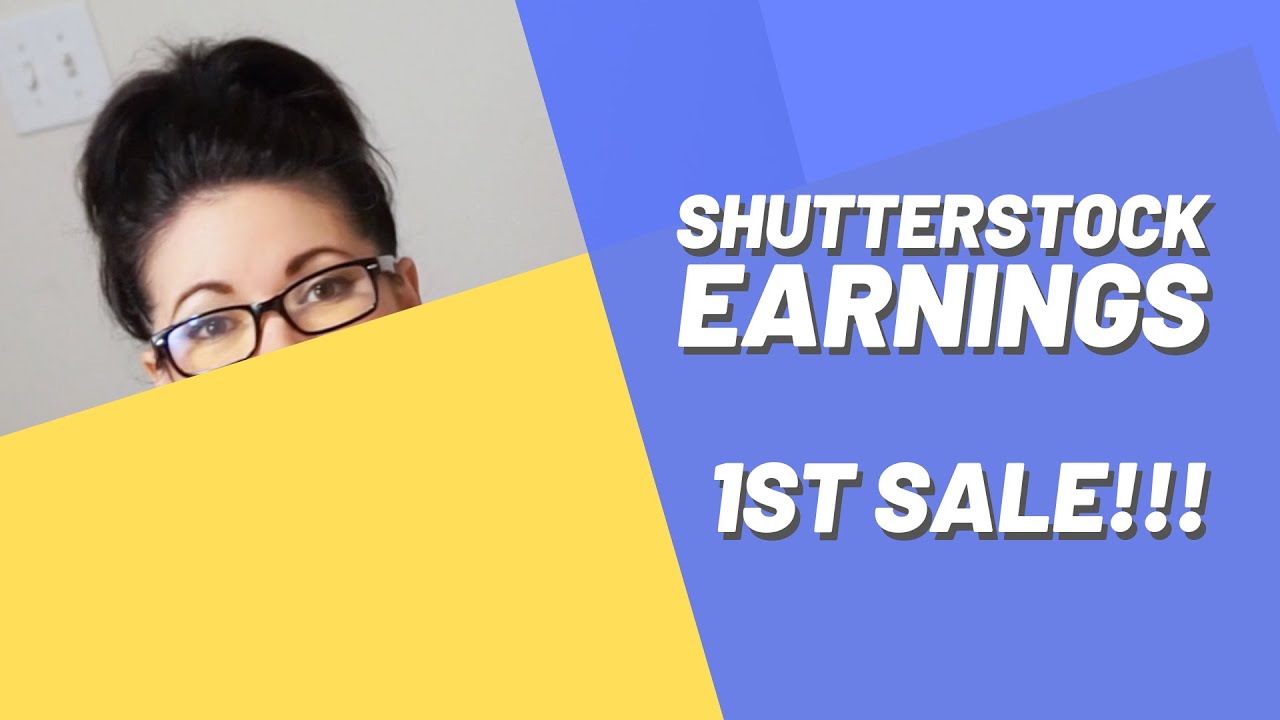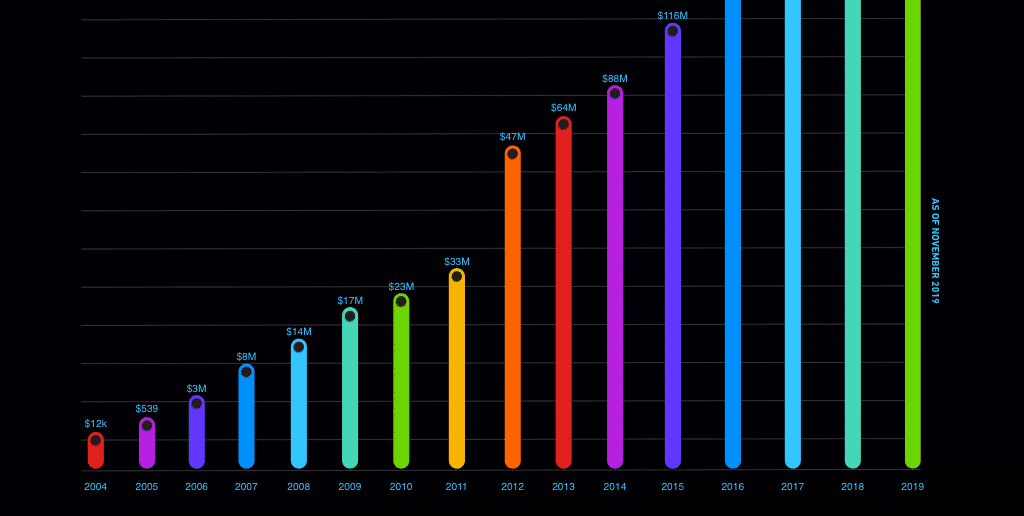Are you thinking about becoming a Shutterstock contributor or just curious about how the platform rewards creators? In this post, we’ll explore how Shutterstock pays its contributors and what factors influence your earnings. Whether you’re a seasoned photographer or just starting out with your digital art, understanding the ins and outs of earnings and revenue sharing can help you make smarter decisions and maximize your income. Let’s dive into the basics so you can get a clear picture of how
How Shutterstock Calculates Royalties for Contributors

Shutterstock’s royalty calculation can seem a bit complex at first glance, but once you get the hang of it, it’s pretty straightforward. The platform primarily pays contributors based on a percentage of the sale price, which varies depending on your contributor level and the type of license purchased. Here’s a breakdown of how it works:
- Revenue Share Percentage: Shutterstock offers different royalty rates depending on your contributor level—Standard, Plus, or Elite. Typically, Standard contributors earn around 20-30% of the sale price, while higher levels can earn up to 40% or more.
- Type of License: Shutterstock offers Standard and Enhanced licenses. Standard licenses generally generate lower royalties, whereas Enhanced licenses, which are more expensive and allow broader usage, result in higher payouts.
- Pricing Tiers and Contributor Levels: Your earnings increase as you gain more sales and advance through the contributor levels. The more your content sells, the higher your royalty percentage becomes.
Here’s an example to illustrate: suppose a buyer purchases a Standard license for a stock photo at $20. If you’re a Standard contributor earning 25%, you’d earn $5 for that sale. If it’s an Enhanced license priced at $100, and you’re earning 30%, you’d make $30 from that single sale.
Another important aspect is the payout threshold. Shutterstock has a minimum payout amount (usually $35), and once your earnings reach this threshold, you can request a payout via PayPal, Skrill, or bank transfer. Keep in mind that your total earnings are accumulated over time, and consistent uploading and marketing of your work can boost your potential earnings significantly.
In summary, Shutterstock’s royalty system rewards active contributors with higher percentages as they grow their portfolios and sales. By understanding these components, you can strategize your uploads and marketing efforts to maximize your earnings on the platform.
Factors Affecting Your Shutterstock Earnings

When it comes to earning on Shutterstock, there’s more than just uploading great content. Several factors come into play that can influence how much you make. Understanding these can help you optimize your portfolio and maximize your income potential.
First up is your contributor level. Shutterstock has different levels—Standard, Enhanced, and Premium. As you contribute more and earn higher sales, you unlock better earning rates. So, the more you sell, the more you can earn per download.
Next, consider content quality and relevance. High-quality, well-shot images and videos that match current trends or popular themes tend to sell better. Think about what buyers are searching for—clean, crisp visuals, and niche content can give you an edge.
Another important factor is keywording and metadata. Properly tagging your content ensures it appears in relevant searches. Use accurate and descriptive keywords to help your content get discovered by the right customers.
Additionally, content diversity matters. Offering a variety of subjects, styles, and formats can attract a broader audience. If you only upload flowers, your sales might be limited, but if you diversify into lifestyle, technology, and business themes, you open more opportunities.
Timing also plays a role. Seasonal content, trending topics, or timely events can boost your sales if uploaded at the right moment. For example, holiday-themed images or back-to-school visuals tend to perform well during specific periods.
Lastly, consistent uploading is key. The more high-quality content you add, the higher your chances of making sales. Building a portfolio over time helps establish your presence and credibility on the platform.
To sum up, your earnings are influenced by a combination of your contribution level, content quality, keywording, diversity, timing, and consistency. Paying attention to these factors can help you turn your creativity into a steady income stream on Shutterstock.
Shutterstock Revenue Share Percentage for Contributors
One of the most common questions new contributors ask is: “How much do I actually earn from each sale?” The answer depends on Shutterstock’s revenue share, which is the percentage of the sale price that goes to you as a contributor.
Shutterstock operates on a tiered revenue share model, meaning your earnings per download can increase as you become more successful and reach higher contributor levels. Here’s a quick breakdown:
| Contributor Level | Revenue Share Percentage | Notes |
|---|---|---|
| Standard | 15-30% | Initial levels, based on total lifetime earnings |
| Enhanced | 30-40% | Achieved after reaching certain sales milestones |
| Premium | 40% or higher | Top-tier contributors with the highest sales |
For example, if a customer buys a download for $10, and you’re at the Standard level with a 20% share, you earn $2 for that sale. At the Enhanced level, with a 35% share, you’d make $3.50, and at the Premium level, possibly even more.
It’s important to note that Shutterstock also offers different payout structures for various content types. Photos, vectors, illustrations, and videos might have slight variations in revenue share. Additionally, the platform may adjust these percentages over time or introduce new levels or incentives to motivate contributors.
Furthermore, Shutterstock’s licensing model impacts your earnings. Standard licenses generally generate less revenue per sale compared to Extended licenses, which are more expensive and offer higher commissions.
In summary, your earnings per download depend on your contributor level, the type of license purchased, and the content category. As you grow and contribute more high-quality content, your revenue share percentage can increase, leading to higher earnings per sale. Keep an eye on your contributor dashboard to track your progress and understand how different sales contribute to your overall income.
Tips to Maximize Your Earnings on Shutterstock
So, you’re eager to boost your earnings as a Shutterstock contributor? Great! The good news is that with a few strategic moves, you can increase your revenue and make your portfolio work harder for you. Here are some practical tips to help you get the most out of your Shutterstock contributions:
1. Focus on High-Demand Topics
Stay ahead of trends by researching what buyers are searching for. Use Shutterstock’s own search trends or tools like Google Trends to identify popular themes. Whether it’s remote work setups, eco-friendly lifestyles, or new technology gadgets, creating content around trending topics can significantly boost your sales.
2. Upload Consistently and Regularly
Consistency is key. The more high-quality images, videos, or illustrations you upload, the higher the chances of your content being discovered. Set a schedule—whether it’s weekly or bi-weekly—and stick to it. Over time, this builds your portfolio’s visibility and increases your earning potential.
3. Optimize Your Metadata
Think of your metadata—titles, descriptions, and keywords—as the map guiding buyers straight to your content. Use relevant, specific keywords and clear, descriptive titles. Avoid keyword stuffing; instead, focus on accurate, helpful tags that match what buyers are searching for.
4. Diversify Your Portfolio
Don’t put all your eggs in one basket. Offer a variety of content styles, themes, and formats. If you primarily upload landscapes, try adding portraits, lifestyle shots, or illustrations. A diverse portfolio attracts a broader audience and can lead to more sales across different categories.
5. Pay Attention to Quality and Technical Standards
Ensure your submissions meet Shutterstock’s quality guidelines. Blurry, poorly lit, or poorly composed images won’t perform well. Invest in good equipment and editing software, and always review your work before uploading to ensure it looks professional.
6. Use Collections to Organize and Promote
Group related assets into collections. This not only helps you organize your work but also makes it easier for buyers to find multiple assets in one go. Well-organized collections can also improve your profile’s professionalism and attract repeat customers.
7. Engage with the Contributor Community
Join Shutterstock forums and social media groups to learn from other contributors. Sharing tips, feedback, and success stories can inspire new ideas and strategies. Plus, being active in the community can sometimes lead to collaborations or exclusive opportunities.
Remember, patience and persistence are key. Earning significant income on Shutterstock takes time, but by applying these tips, you’ll position yourself for better earnings and a thriving contributor career.
Conclusion and Final Thoughts on Shutterstock Revenue Sharing
Understanding how Shutterstock’s revenue sharing works is essential if you want to turn your creative efforts into a steady income stream. As a contributor, you earn a percentage of the license fee whenever someone downloads your content. This means your earnings depend heavily on the quality, relevance, and demand for your work.
One of the most appealing aspects of Shutterstock’s model is that it offers a passive income opportunity. Once you upload your assets, they can continue to generate revenue over time without additional effort—especially if you focus on evergreen topics or timeless visuals.
However, it’s important to keep in mind that earnings can vary widely based on several factors:
- Content quality and uniqueness: Stand out with professional and original work.
- Upload frequency: The more relevant content you add, the higher your chances of earning.
- Market demand: Stay updated on trending topics to align your uploads accordingly.
- Keyword optimization: Proper metadata ensures your content is discoverable.
While the revenue share percentages might seem modest at first glance, a well-curated, consistent portfolio can generate a substantial income over time. Remember, success on Shutterstock is a marathon, not a sprint. Keep learning, adapting, and uploading quality content, and you’ll find your earnings gradually growing.
In the end, contributing to Shutterstock can be a rewarding way to monetize your creativity. By understanding the platform’s revenue sharing model and applying strategic tips, you’re setting yourself up for a more profitable and fulfilling contributor journey. Keep creating, keep uploading, and enjoy turning your passion into income!

